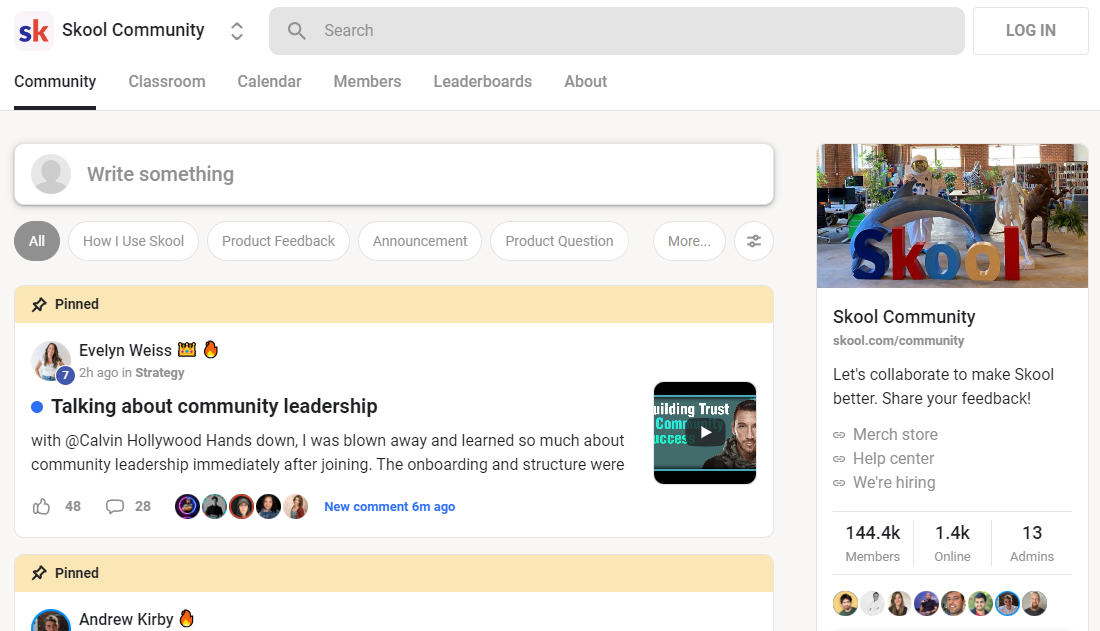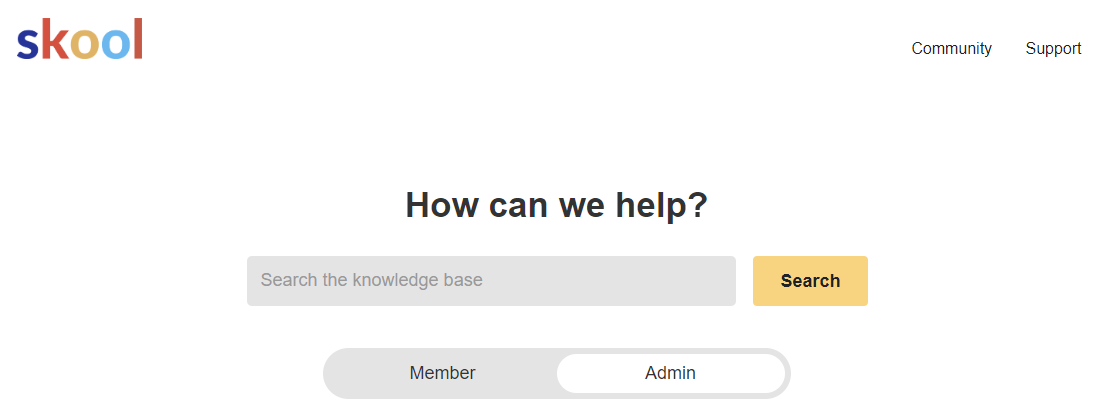Skool offers best-in-class gamification features that improve involvement. For instance, participants can make levels based upon their involvement, which open program material and various other incentives that additionally inspire them.
Previously, creators had to make use of various devices for holding programs, building communities and taking care of email advertising. This created a disjointed experience for both makers and their target markets.
Creating Courses
Skool has an easy, user-friendly user interface and focuses on neighborhood building and training course holding over other attributes. It allows designers to develop a vivid community for their programs and training programs by connecting them with the best target market. This additionally helps them keep an eye on the health of their web content business with the help of a basic control panel.

To start, an individual can register for a cost-free 14-day trial of Skool. Afterwards, they can pay $99 a month for the platform to organize a solitary area. There are no other rates alternatives available for the moment. Skool also refines repayment and pays developers weekly, but it does charge a 2.9% transaction cost.
One of the special facets of Skool is that it can be utilized to produce interactive courses. These can consist of live webinars, group tasks and real-time discussions. These types of training courses urge participation and boost program completion rates. Furthermore, Skool’s gamification functions aid to motivate community involvement. For example, participants can gain factors and unlock program web content when they reach particular degrees in the community.
Users can also use the social eat Skool to post updates and interact with others in the neighborhood. The feed looks like a Facebook group, yet with a more regulated means of uploading. This assists to avoid the type of spam and abuse that happens on other social platforms.
Taking care of Communities
Skool is a very easy platform to make use of, for both members and admins. Its simplicity is one of its primary selling points– when a person joins your neighborhood they will not be confronted with a bunch of options or functions that can hinder their experience and perplex them.
The platform starts off as an exclusive group by default, however you can quickly transform this to open up your area to anyone that you wish to be part of it. Once you’ve done this you’ll see a social feed like you would certainly on Facebook Groups or WhatsApp (yet without all the rip-off things and swearing).
You can also add a class tab to your area that you can utilize to share academic material with your members. This feature is particularly valuable for neighborhoods that are concentrated on knowing or professional advancement as it assists to create an academic framework and makes it very easy for members to track their progress. In addition, the system has gamification elements that enable members to gain points by suching as messages or comments. When they reach a particular degree they can unlock sources, such as courses, further driving engagement.
The other trendy thing is that Skool has a mobile app, similar to Mighty Networks or Slack, so members can keep up with your neighborhood and connect on the move. This is a terrific means to urge and involve your participants and to help them get assistance from each other when they need it, instead of just turning to you for responses.
Who Founded The Skool Community
Skool focuses on gamification, allowing users to make factors and badges for their payments. This encourages participants to engage with the area and contribute to conversations. Subsequently, this helps them level up and unlock perks like video clips and other web content. Admins can also set courses to be unlocked at particular levels to more drive interaction.

The Skool user interface is spick-and-span and instinctive. Its main features consist of the Community tab, which looks similar to a Facebook team feed. Here, users can post comments and message as well as upload images, web links and videos. Members can also view each others accounts and connect with them. Furthermore, users can create exclusive groups in the neighborhood to talk about certain topics.
Another function of Skool is the Classroom tab, which resembles a YouTube livestream or Zoom conference. Utilizing this, managers can host trainings and webinars for their students. They can additionally include occasions in the calendar to remain updated on upcoming events and Who Founded The Skool Community.
Nevertheless, some facets of Skool could make use of improvement. As an example, the system isn’t versatile when it concerns monetization as customers can not provide several prices tiers for their programs and neighborhood subscriptions. Additionally, the device does not have an e-mail marketing function, which may be a bargain breaker for some training course designers. It also does not have indigenous video clip hosting, meaning that users require to make use of exterior systems like YouTube, Loom and Vimeo for their video clips.
Adding Content
The procedure for adding material and connecting with members on Skool is simple and uncomplicated. Admins can develop blog posts with message, GIFs, videos and surveys. They can likewise include event calendars to alert neighborhood participants of upcoming group Zoom calls or live streams. Additionally, they can make use of Skool’s e-mail program feature to send out a message to the whole community with a single click. This removes the requirement for tagging and checklist segmentation, which can be difficult.
Additionally, Skool’s gamification attributes can boost engagement and individual retention. It urges members to communicate with the material regularly by rewarding them with various perks. These consist of opening program web content, earning factors and earning a spot on community leaderboards.
While Skool provides a host of valuable features for creating and delivering online training courses, it’s not for everyone. The system is best for coaches, experts and other details entrepreneurs. Nevertheless, the cost can be an obstacle for some individuals aiming to monetize their on-line web content.
Furthermore, the lack of fundamental tiers and a short free trial might be a deterrent for several. Additionally, the platform’s laser-focus on eLearning can make it less desirable for individuals who wish to offer various other electronic items. Nonetheless, despite these downsides, Who Founded The Skool Community is still a sensible option for any person aiming to develop and monetize online programs.